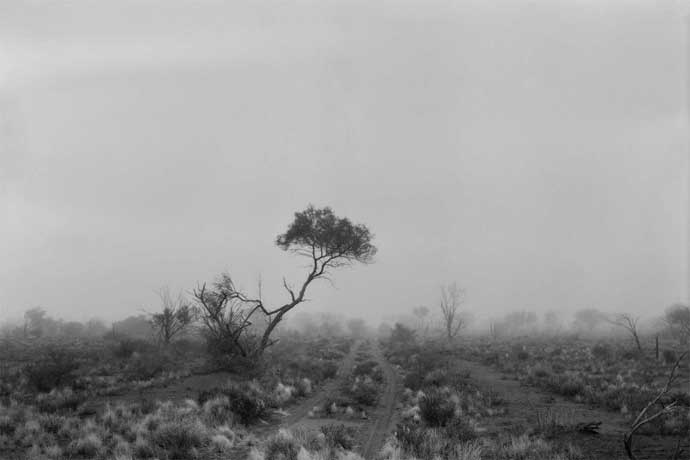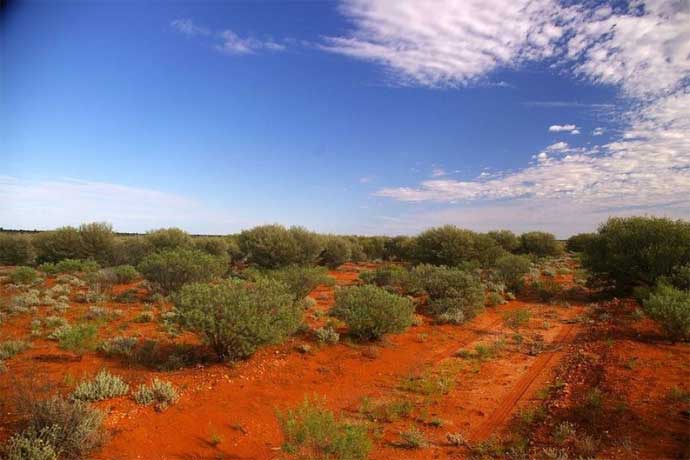Maralinga: Sixty years on, the bomb tests remind us not to put security over safety

Image: The 1956 nuclear weapons test at Maralinga. (ABC News)
Liz Cook The Conversation 27 September, 2016
It is September 27, 1956. At a dusty site called One Tree, in the northern reaches of the 3,200-square-kilometre Maralinga atomic weapons test range in outback South Australia, the winds have finally died down and the countdown begins.
The site has been on alert for more than two weeks, but the weather has constantly interfered with the plans. Finally, Professor Sir William Penney, head of the UK Atomic Weapons Research Establishment, can wait no longer. He gives the final, definitive go-ahead.
The military personnel, scientists, technicians and media - as well as the "indoctrinee force" of officers positioned close to the blast zone and required to report back on the effects of an atomic bomb up close - tense in readiness.
And so, at 5pm, Operation Buffalo begins. The 15-kilotonne atomic device, the same explosive strength as the weapon dropped on Hiroshima 11 years earlier (although totally different in design), is bolted to a 30-metre steel tower. The device is a plutonium warhead that will test Britain's "Red Beard" tactical nuclear weapon.
The count reaches its finale - three ... two ... one ... FLASH! - and all present turn their backs.
When given the order to turn back again, they see an awesome, rising fireball. Then Maralinga's first mushroom cloud begins to bloom over the plain.
By October the following year, there will have been six more.
RAF and RAAF aircraft prepare to fly through the billowing cloud to gather samples. The cloud rises much higher than predicted and, despite the delay, the winds are still unsuitable for atmospheric nuclear testing. The radioactive cloud heads due east, towards populated areas on Australia's east coast.

Image: One tree, taken in 2010, is on the site of the Emu Field atomic test site of 1953. (Supplied: Burrinja Cultural Centre: Artist Paul Ogier)
Power struggle
So began the most damaging chapter in the history of British nuclear weapons testing in Australia. The UK had carried out atomic tests in 1952 and 1956 at the Monte Bello Islands off Western Australia, and in 1953 at Emu Field north of Maralinga.

British nuclear bomb test sites in Australia.
(Supplied: Jakew/Commons)
The British had requested and were granted a huge chunk of South Australia to create a "permanent" atomic weapons test site, after finding the conditions at Monte Bello and Emu Field too remote and unworkable. Australia's then prime minister, Robert Menzies, was all too happy to oblige. Back in September 1950 in a phone call with his British counterpart, Clement Attlee, he had said yes to nuclear testing without even referring the issue to his cabinet.
Menzies was not entirely blinded by his well-known anglophilia; he also saw advantages for Australia in granting Britain's request. He was seeking assurances of security in a post-Hiroshima, nuclear-armed world and he believed that working with the UK would provide guarantees of at least British protection, and probably US protection as well.
He was also exploring ways to power civilian Australia with atomic energy and - whisper it - even to buy an atomic bomb with an Australian flag on it (for more background, see here).
While Australia had not been involved in developing either atomic weaponry or nuclear energy, she wanted in now. Menzies' ambitions were such that he authorised offering more to the British than they requested.
While Australia was preparing to sign the Maralinga agreement, the supply minister, Howard Beale, wrote in a top-secret 1954 cabinet document:
Although [the] UK had intimated that she was prepared to meet the full costs, Australia proposed that the principles of apportioning the expenses of the trial should be agreed whereby the cost of Australian personnel engaged on the preparation of the site, and of materials and equipment which could be recovered after the tests, should fall to Australia's account.
Beale said that he did not want Australia to be a mere "hewer of wood and drawer of water" for the British, but a respected partner of high (though maybe not equal) standing with access to the knowledge generated from the atomic tests.
That hope was forlorn and unrealised. Australia duly hewed the wood and drew the water at Maralinga, and stood by while Britain's nuclear and military elite trashed a swathe of Australia's landscape and then, in the mid-1960s, promptly left.
Britain carried out a total of 12 major weapons tests in Australia: three at Monte Bello, two at Emu Field and seven at Maralinga. The British also conducted hundreds of so-called "minor trials", including the highly damaging Vixen B radiological experiments, which scattered long-lived plutonium over a large area at Maralinga.
The British carried out two clean-up operations - Operation Hercules in 1964 and Operation Brumby in 1967 - both of which made the contamination problems worse.
Legacy of damage
The damage done to Indigenous people in the vicinity of all three test sites is immeasurable and included displacement, injury and death.
Service personnel from several countries, but particularly Britain and Australia, also suffered - not least because of their continuing fight for the slightest recognition of the dangers they faced.
Many of the injuries and deaths allegedly caused by the British tests have not been formally linked to the operation, a source of ongoing distress for those involved.
The cost of the clean-up exceeded $100 million in the late 1990s. Britain paid less than half, and only after protracted pressure and negotiations.
Decades later, we still don't know the full extent of the effects suffered by service personnel and local communities. Despite years of legal wrangling, those communities' suffering has never been properly recognised or compensated.

Image: The Maralinga landscape today. (Supplied: Wayne England/Commons)
Why did Australia allow it to happen? The answer is that Britain asserted its nuclear colonialism just as an anglophile prime minister took power in Australia, and after the United States made nuclear weapons research collaboration with other nations illegal, barring further joint weapons development with the UK.
Menzies' political agenda emphasised national security and tapped into Cold War fears. While acting in what he thought were Australia's interests (as well as allegiance to the mother country), he displayed a reckless disregard for the risks of letting loose huge quantities of radioactive material without adequate safeguards.
Six decades later, those atomic weapons tests still cast their shadow across Australia's landscape. They stand as testament to the dangers of government decisions made without close scrutiny, and as a reminder - at a time when leaders are once again preoccupied with international security - not to let it happen again.
Liz Tynan is a senior lecturer and co-ordinator of Research Student Academic Support at James Cook University. She will launch her book, Atomic Thunder: The Maralinga Story, on September 27. A travelling art exhibition, Black Mist Burnt Country, featuring art from the Maralinga lands, will open on the same day.
Originally published in The Conversation.
▪ The nuclear wars waged against First Nations people
▪ Maralinga: Sixty years on, the bomb tests remind us not to put security over safety
▪ Maralinga could be flagged as nuclear dump site: Wake of SA royal commission
▪ Aboriginal people affected by Maralinga nuclear tests take peace sculpture to Japan
▪ Funding cut signals the destruction of Aboriginal life in Australia
▪ First shipment of nuclear waste on its way, as we speak
▪ Why Australia should not become the world's nuclear waste dump
▪ Radioactive waste and the nuclear war on First Nations and Peoples
▪ South Australian First Nations people face a new nuclear test
▪ Don't take our lands - Yami Lester
▪ Nuclear Alliance launches in protest against waste dump
▪ A Grandmother at the Gates of Hell
See also the Muckaty Nuclear Waste campaign - Details of Campaign, Videos, Audio Reports and the daily Court Reports - See the sidebar Menu under Special Features.

